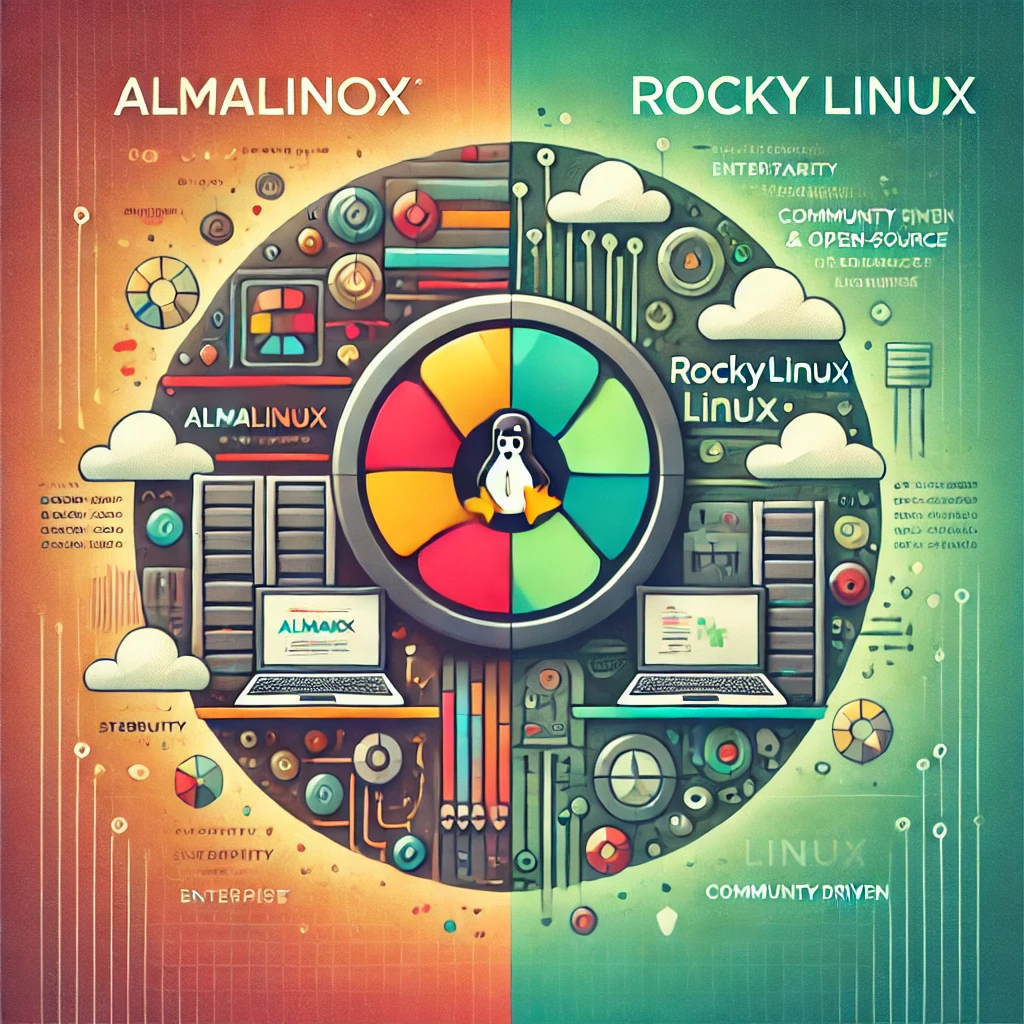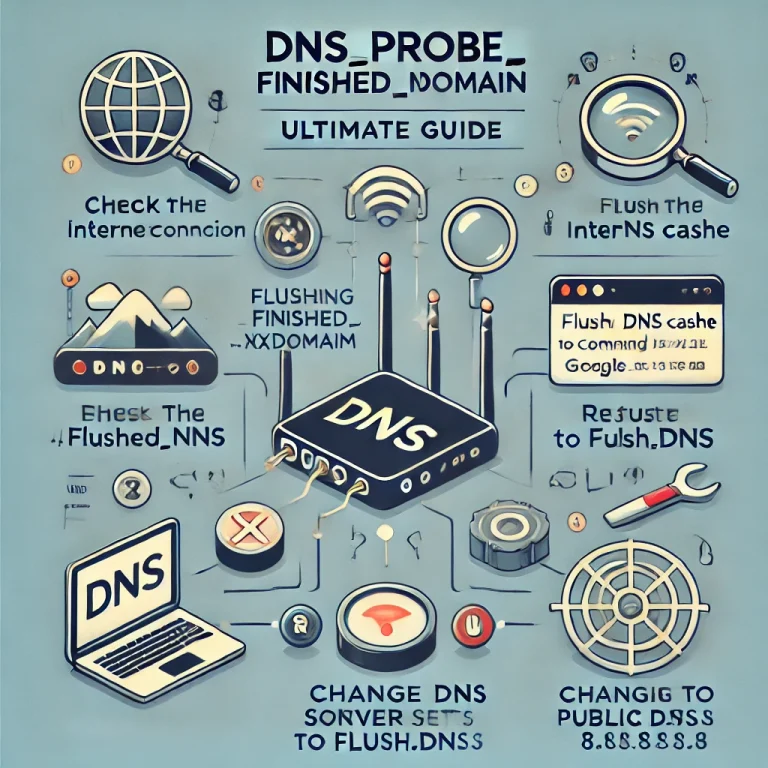AlmaLinux vs Rocky Linux: Which Linux Distro Is the Best for Your Enterprise?
When choosing the right Linux distribution for enterprise servers, two major contenders have emerged: AlmaLinux and Rocky Linux. These distros rose to prominence after the announcement that CentOS would shift its focus to CentOS Stream, leaving many businesses and developers looking for alternatives. AlmaLinux and Rocky Linux have filled that gap, each promising to carry on CentOS’s legacy of stability, security, and long-term support.
But how do they stack up against each other? In this comprehensive guide, we will explore the key differences between AlmaLinux and Rocky Linux, evaluate their performance, and help you decide which one is better suited for your needs.

Table of Contents
What Are AlmaLinux and Rocky Linux?
Both AlmaLinux and Rocky Linux are open-source, community-driven operating systems designed to replace CentOS. They aim to be downstream rebuilds of Red Hat Enterprise Linux (RHEL), offering binary compatibility and extended support periods. This makes them excellent choices for businesses and developers who rely on RHEL’s ecosystem but want a free and stable alternative.
AlmaLinux was developed by CloudLinux, a company that specializes in server security and optimization. The distro was released in 2021 with a commitment to providing users with a long-term, free, and community-driven operating system.
Rocky Linux was spearheaded by Gregory Kurtzer, one of the original co-founders of CentOS. He launched Rocky Linux with the same vision: a community-backed, production-grade enterprise OS that offers stability, security, and full compatibility with RHEL.
AlmaLinux vs Rocky Linux: Key Differences
Although both AlmaLinux and Rocky Linux aim to achieve the same goals, there are several differences in their development, support structure, and user communities.
Development and Backing
AlmaLinux is backed by CloudLinux, a commercial entity, providing it with financial resources and dedicated developers. This backing ensures that AlmaLinux has a stable development pipeline and long-term support, which is a key concern for many enterprises.
Rocky Linux, on the other hand, is entirely community-driven with no commercial backing. This doesn’t make it any less reliable, but it does create a different dynamic where the community plays a critical role in its future direction. The strong community backing Rocky Linux has grown significantly, thanks to the reputation of its founder, Gregory Kurtzer.
Release Cadence and Stability
Both distributions maintain close synchronization with RHEL’s release cycle, but AlmaLinux tends to push out releases faster due to its dedicated team. Rocky Linux focuses heavily on ensuring every release is thoroughly tested by the community before going public.
For businesses that prioritize rapid access to the latest features, AlmaLinux may have a slight edge. However, if you value rigorous community testing and a more traditional release cycle, Rocky Linux could be a better fit.
AlmaLinux vs Rocky Linux: Performance Comparison
Performance is a critical factor when choosing between two enterprise-grade operating systems. Both AlmaLinux and Rocky Linux share the same base code as RHEL, which means there is little to no difference in performance under most conditions. However, there are some nuances to consider.
Hardware Compatibility
Both distributions offer excellent hardware compatibility out of the box, making them ideal for enterprise environments where hardware choices can vary. However, since AlmaLinux has commercial backing from CloudLinux, you may find additional optimizations and performance enhancements in future releases that could cater specifically to high-performance environments.
System Resource Management
Rocky Linux and AlmaLinux are virtually identical in terms of system resource management, given that both are forks of RHEL. Whether you’re running virtualized environments, containerized workloads, or physical servers, both distributions will perform reliably and efficiently.
In short, the performance difference between AlmaLinux and Rocky Linux is negligible, and the deciding factor here would likely be the additional support or features you may require from your operating system.
Security and Support: AlmaLinux vs Rocky Linux
When deploying an enterprise operating system, security and support are critical concerns. Here’s how AlmaLinux and Rocky Linux differ in these areas:
Security Features
Both distributions inherit the robust security features of RHEL, including SELinux (Security-Enhanced Linux) policies, which provide advanced access control mechanisms. AlmaLinux, however, may have an advantage for businesses that require more frequent security updates, as CloudLinux’s team can quickly push out fixes and patches.
Rocky Linux relies more on the community to identify and address vulnerabilities, which means security patches may take slightly longer to release, although this has not been a significant issue thus far.
Enterprise Support
AlmaLinux offers several support options through the CloudLinux organization, including professional services and extended support for businesses with critical operations. This can be especially appealing for enterprises that require a more formal support structure.
Rocky Linux, being community-driven, provides free support through forums and mailing lists. However, professional support services are still available through third-party vendors, ensuring that Rocky Linux can be a viable option for enterprise environments that need formal support.
AlmaLinux vs Rocky Linux: Community and Ecosystem
The strength of a Linux distribution often lies in its community and ecosystem. Here’s a look at how AlmaLinux and Rocky Linux compare in this regard:
Community Engagement
Rocky Linux benefits from having a highly active community that is deeply invested in its success. Since its inception, Rocky Linux has garnered strong support from developers, system administrators, and enterprises who were previously reliant on CentOS.
AlmaLinux also has a vibrant community, but it is supplemented by the commercial backing of CloudLinux. This hybrid model means that while the community is essential, the distribution can also rely on CloudLinux’s resources to maintain and improve the operating system.
Ecosystem and Partnerships
Both distributions have built robust ecosystems around their operating systems, offering access to a wide range of software packages, repositories, and cloud integrations. AlmaLinux has partnerships with several cloud providers and third-party vendors, making it slightly more attractive for businesses that rely heavily on cloud-based infrastructures.
Rocky Linux, with its community-driven nature, has a more grassroots approach but has also formed strong partnerships with vendors offering professional services and support packages.
Which One Is Right for You: AlmaLinux or Rocky Linux?
Ultimately, the decision between AlmaLinux and Rocky Linux will depend on your specific needs and priorities. Here are some scenarios where one might be a better fit than the other:
Choose AlmaLinux if:
- You need fast access to updates and new features.
- You want a commercial entity backing your OS for long-term support.
- Your business requires additional security patches or optimizations that come with a dedicated development team.
- You rely heavily on cloud infrastructure and want more formalized partnerships.
Choose Rocky Linux if:
- You value a pure community-driven approach and want to contribute to the project.
- You prefer a traditional release cycle with more emphasis on community testing.
- You are looking for a free, stable, and reliable RHEL fork with a strong reputation.
- You have an existing support structure through third-party vendors and don’t require commercial backing.
Conclusion: AlmaLinux vs Rocky Linux – A Balanced Choice for Enterprises
Both AlmaLinux and Rocky Linux provide reliable, stable, and secure enterprise-grade Linux distributions that can serve as excellent alternatives to CentOS. Your decision will depend largely on whether you prefer the speed and commercial backing of AlmaLinux or the community-driven model of Rocky Linux.
If you need rapid updates, formal support, and a more cloud-optimized approach, AlmaLinux could be your best bet. On the other hand, if you’re looking for a free, community-driven system with a strong foundation and don’t mind slightly slower release cycles, Rocky Linux is a formidable choice.
In any case, you won’t go wrong with either distribution. Both have emerged as viable and respected successors to CentOS, ensuring that businesses and developers continue to have access to free and robust Linux solutions.
FAQs
What is the difference between AlmaLinux and Rocky Linux?
AlmaLinux is backed by CloudLinux with commercial support, while Rocky Linux is entirely community-driven. Both are downstream rebuilds of RHEL but differ in their development models and support structures.
Which is more secure, AlmaLinux vs Rocky Linux?
Both are equally secure, offering similar security features inherited from RHEL. However, AlmaLinux may release security patches slightly faster due to its commercial backing.
Can I switch from CentOS to AlmaLinux or Rocky Linux easily?
Yes, both AlmaLinux and Rocky Linux offer smooth migration paths from CentOS, making the transition easy for enterprises.
Is there any performance difference between AlmaLinux and Rocky Linux?
The two have virtually no performance difference, as both are based on the same RHEL source code.
Which distro is better for cloud environments, AlmaLinux or Rocky Linux?
AlmaLinux may have an edge in cloud environments due to its partnerships with cloud providers and third-party vendors.
Does Rocky Linux offer professional support?
While Rocky Linux is community-driven, professional support is available through third-party vendors.






